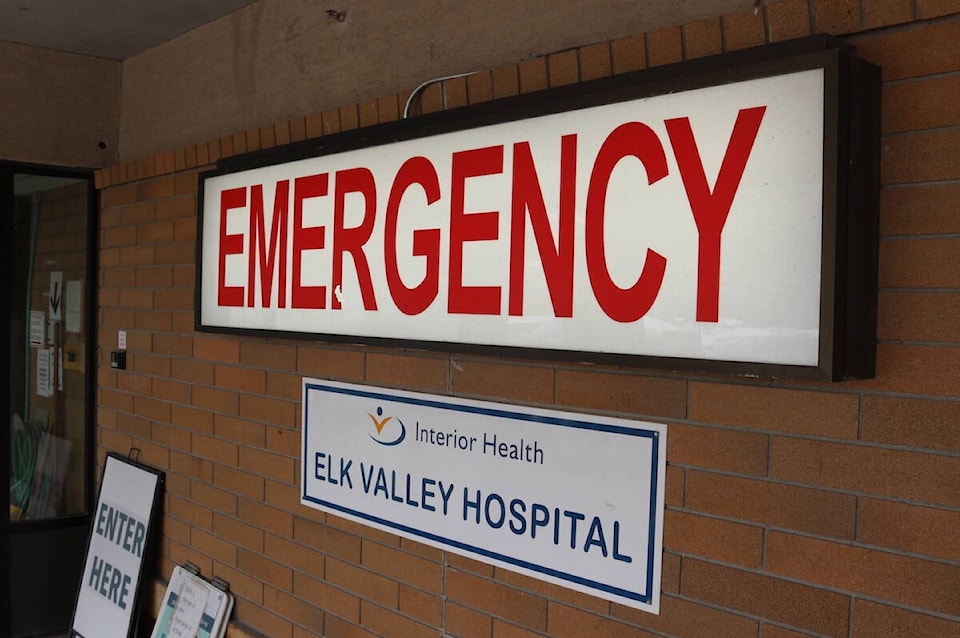A new program has rolled out in the Elk Valley to help treat and care for people experiencing opioid addiction.
The ‘ED Suboxone program’, which began to come into effect in the region around the end of January, involves both increasing the accessibility of Suboxone in health centre emergency departments (EDs) across the Elk Valley, and provides an active follow-up program for clients to “meet them where they’re at,” according to Jodi Hunniford, who works as a Suboxone nurse prescriber with Sparwood Mental Health and Substance Use.
Suboxone consists of two medications: buprenorphine, and naloxone. The buprenorphine binds to the same receptors in the brain as opioids like heroine, morphine, and oxycodone. The naloxone acts as a protection mechanism against a person using the drug to get high.
“I think it’s fantastic,” Hunniford said.
“It takes away the cravings, and it takes away withdrawal symptoms,” she said, adding that it has a better safety profile than methadone, another medication used to treat opioid addiction.
Hunniford said Suboxone is taken under the tongue, and “works extremely fast.”
“It’s extremely easy to initiate, maintain, and it gives clients a quality of life back in the community if they’re coming off their opioids.”
Hunniford has been prescribing Suboxone in the community since November, 2020. The main difference from past uses of the medication is that now it is immediately accessible in EDs, and takes away the barrier of needing to wait for a doctor’s appointment to get the craving-destroying drug, she explained.
According to Hunniford, Suboxone does the following things: it supports people who choose to reduce or stop their opioid use; it increases the likelihood that a person will continue to not use illicit substances; it reduces opioid use and symptoms related to opioid use disorder; it reduces the risk of infectious disease transmission; it reduces the chances of an overdose related death.
The second piece of the program, aside from easier access to the medication itself, is the follow-up and support stage.
“My piece is I work in the community,” she said.
“If a client is at that stage of change, where they want access to Suboxone, they can go to the emergency department and request the Suboxone to-go pack. And then a nurse or staff member, a clinician, would walk them through and educate them on how they’re going to take it over the next three days, and then I would still get the referral to that client.”
“I’m a safe place for people to talk about their drug use, I can provide the resources and access to treatment centres, to counselling, to primary care. I provide a lot of family support for families unsure how to navigate the system and support their loved one. Medication, education, and harm reduction.”
She said the program is being progressively rolled out across Interior Health in response to the ‘opioid crisis’ in the province.
According to a BC Coroners Service report, “In 2021, there were 2,224 suspected illicit drug toxicity deaths, the most ever recorded in a year. This represents a 26 per cent increase over the number of deaths seen in 2020 (1,767).”
“In November and December 2021, there were 210 and 215 suspected illicit drug toxicity deaths, respectively. These are the two largest numbers of suspected deaths ever recorded in a month.”
Hunniford said “there is a long-standing issue with opioids… and this crisis has been going on now for several years.”
She said it’s “a real problem,” and that people “need to understand that it affects everyone.”
“Anybody can access (Suboxone). If you want off opioids, you can go to the emergency department and access the medication.”
READ MORE: Rallying moms; some dads, call for more action to reduce B.C. opioid deaths
READ MORE: Trickle-down effect: never-ending opioid crisis driving B.C. paramedics to exhaustion
@fishynewswatch
josh.fischlin@thefreepress.ca
Like us on Facebook and follow us on Twitter.
